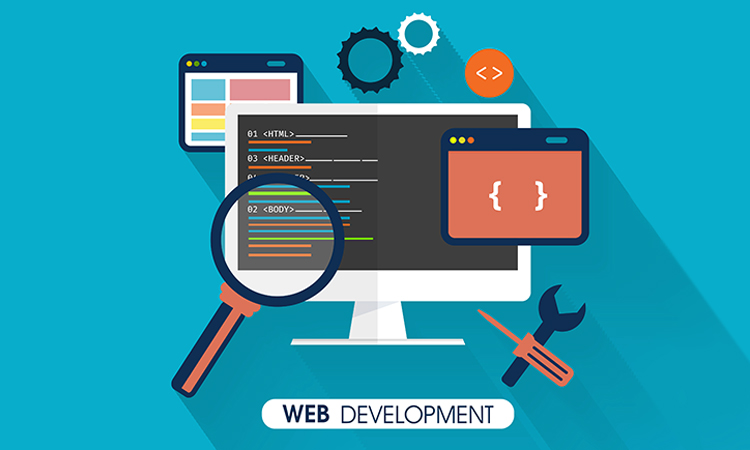Agile and Scrum are the two project management buzzwords that have resonated strongly with the tech world in the last two decades. In the akin-to space race softdev environment, this method and framework, respectively, have proven to be precious time-saving and asset-boosting vehicles.
As an authoritative partner of startups, BrightMarbles Group Holding educates new business owners on how to use Agile development at their utmost benefit.
This article explains why Agile development is a startup’s best friend, providing relevant comparisons, and illustrating its positive effects via our experts’ insights.
Agile Methodology Explained

The Agile methodology is a project management strategy in which projects are divided into smaller chunks, with constant revisions of completed bits (and bytes). This approach is based on a round-the-clock collaboration, with the three typical stages: planning, execution, revision.
In a wider sense, Agile is a special work philosophy, applicable to different industries. Published in 2001 in the form of the Agile Manifesto, this operational mindset puts people in the spotlight, prioritizing team collaboration and cross-functional operability.
The dynamic nature of the Agile methodology is the reason why it has become the most widespread project management approach in the brave tech world. As software innovations are galloping from the colorful present to the promising future, Agile is the most optimal approach to softdev organization.
BM Insight: As one of the softdev revolution forerunners, BMGH roots its operations in simply the best methodologies and tools available on the market; Agile is no exception. Our project-management experience speaks in favor of Agile and all the joys it brings. Hence, our veteran product and delivery manager Tanja Maliković, also a passionate fantasy aficionado, has put together a one-of-a-kind, epic-fantasy story on the birth of Agile. Read Part 1 and Part 2 on our blog.
Agile vs. Scrum vs. Kanban
When talking about Agile, let’s see how it differs from Scrum and Kanban.
Agile is the supreme term in the Agile environment, referring to the project-management philosophy explained above. It comprises various frameworks, but the point is that large, long-term projects are divided into smaller tasks, handled within shorter periods so that the entire software development process is accelerated.
Scrum is one of the frameworks within Agile that ensures executing smaller tasks within a project with utmost precision. The Scrum’s key measure is a sprint – a specified interval during which a group of engineers needs to finish the agreed amount of work.
Kanban is another well-known and often-used Agile framework, based on visual task cards, and applied predominantly in manual industry. However, some software developers also use Kanban to get things organized and done on time.
Scrum and Kanban are sometimes combined in the production plants that incorporate software solutions directly into tangible products.
BM Insight: Scrum is a much-discussed framework with various adapted versions. Our Scrum masters and their colleagues in product-development companies don’t have the same workdays or tasks. In our article Scrum 101: Applying the Most Popular Agile Framework, we’ve debunked Scrum from our unique point of view.
Testing and Agile

Agile provides a dynamic and cost-effective testing framework throughout the software development lifecycle.
Compared to traditional testing methods, comprised within the Waterfall development methodology, Agile advocates the test early, test often business policy. Before the Agile Manifesto was published, Waterfall was the predominant model in project management. The major feature of this methodology is that one development process consists of consecutive stages; each of these stages must be completed before the next one begins.
As the softdev game accelerated at the turn of the century, a need for a more iterative and result-oriented project-management method arose. In other words, the time had come to go agile.
Dunja Ibročić, our in-house Scrum Master, who has successfully organized and implemented dozens of projects, puts it this way:
“Unlike the traditional testing that adheres to a linear or sequential development model, Agile advocates a more iterative and incremental approach to testing. Agile is often driven by tests, and thus the notion of testing promotes continuous integration with development. Testing and quality have become imperative for all team members.” Read more about her stance on testing in Agile development techniques in her eponymous blog post.
Agile Testing Is Saving

To rephrase the adage “Caring is sharing”, we can say with confidence that Agile testing is saving; but saving what? Here are several ways in which Agile testing saves your money, energy, and time:
- Early detection of issues. Thanks to Agile continuous testing, issues are found and addressed as soon as they are discovered, reducing the chance that expensive defects appear in the later stages of development.
- Quick feedback. Continuous interactions between developers, testers, and stakeholders help find and correct bugs or malfunctions early in the development cycle, reducing the time required for fixing them later.
- Prioritizing software features. Working in the Agile environment allows for the prioritization of features based on their value to the customer. Hence, softdevs and testers can focus on the most critical and valuable features first, using limited testing resources efficiently. Also, Agile teams are typically flexible, and adaptable to changing requirements and priorities.
- Reduced documentation. Rather than demanding comprehensive test plans and documentation, Agile project managers focus on working software.
- Continuous Integration and Automation. The iterative nature of Agile practices includes continuous integration and test automation, leading to faster testing processes and reducing manual testing. Nevertheless, manual testing may still play a vital role in some aspects of software development.
- Incremental Releases. Agile testing typically results in smaller, incremental releases of software. Testing and maintaining the quality of each release is thus easier, plus, it’s cheaper than testing large, monolithic applications.
- Reduced Rework. Early and continuous testing cuts the need for extensive rework in the later stages of development.
- Client Satisfaction. Software engineers and project managers utilizing Agile testing deliver value to their clients early and often. When customers are satisfied with the software and its quality, you can expect a high retention rate and further recommendations.
As our test engineer Bojana Šatara Anić claims in her article Shift Left Testing: A Key for Improving Your QA Strategy:
“Regardless of the chosen term, the Shift Left means to test early and test often. It intends to identify and resolve bugs, thus reducing costs, as early as possible in the Software Development Life Cycle. Discovering bugs and bottlenecks early in the development process increases efficiency in the software development process.”
BM Insight: Not only that we hold Agile-enhanced testing extremely important, but we also maintain a strict quality-assurance quality in every single code we write, check, and verify. Find out more about our QA perspective from the blog post Quality Assurance: The Measure of Software Development Excellence.
Why Use Agile in Startup Software Development

Now, let’s break down and sum up the key benefits of using Agile in startup software development:
- Time efficiency. Small project chunks, dynamic teams, and wisely distributed tasks – all thanks to Agile – ensure timely and error-free software delivery.
- Enhanced collaboration of team members. Agile puts the interplay between software and engineers in the spotlight, enhancing productive collaboration between team members. In a startup environment, it bears the make-it-or-break-it importance.
- Fast-submitted iterations. Above we explained the Agile-based Scrum framework and its stages, i.e., sprints. This kind of project organization ensures fast-submitted iterations. The result: developers, project managers, marketers, and all involved parties increase their efficiency. To top it off, clients receive what they’ve ordered on time.
- Swift adaptation to ongoing changes. Startup owners are especially prone to ongoing market changes. Be it a new feature a competitor has launched, an investment surge, or a new idea that crosses their mind, SMB-entrepreneurs profit from Agile software development on many levels.
- Early delivery. With Agile, you can tell at an early stage whether a product or software solution is worth finishing in the first place. It is an MVP-based approach to software building, meaning that a business owner can have the most viable product in their hands pretty soon. From that point onward, they’ll quickly decide how and whether to continue building it.
- Higher level of employees’ ownership over tasks and projects. The Agile working principle brings unprecedented autonomy to software development teams. In turn, it increases the responsibility and ownership that team leads and members have over particular projects.
BM Insight: There’s no well-used Agile without versatile and people-centered project management. Further, exquisite Scrum masters need equally powerful software engineers to start the development engine and keep it revving. Then, detail-oriented testers are a must-have, to polish every product before the launch. Marketers, HR, and Legal&Finance experts are also vital to spread the word about the latest startup partnerships, cater to employees’ wellbeing, and ensure continuous compliance, respectively. In our article The Entourage of IT Projects – The Binding Tissue of IT Software Development, we dig into every professional we need to bring software to life.
Why Not Use Agile to Build Softdev Startups
Even though we consider Agile the best thing since bread came sliced – i.e., since Tim Berners-Lee invented the World Wide Web in 1989 – it’s not a panacea for all software development projects.
But who wouldn’t want Agile, especially after the heaps we’ve praised on it so far, one might wonder.
Let’s start from the premise that not every business owner needs a fast-built software solution. For instance, you’re a multifaceted investor who simply wants to diversify their portfolio. You have enough time and assets not to succumb to the predominant trend of making apps as quickly as it gets.
In that case, you probably prefer stability to dynamics. As Agile and stability don’t always overlap, such business owners might not embrace this softdev methodology. It also might lack predictability, which is frowned upon by most investors.
Also, the flexible and dynamic nature of Agile and Scrum could lead to confusion and lack of accountability. All the professionals working on the project must be completely on board. Otherwise, you can expect missed deadlines and inaccurate estimates.
We typically perceive flexibility as something positive. However, imagine a context in which project managers or team leaders lack the necessary organizational skills and commitment. Instead of task-devouring efficiency, you get confusion. And if a project is transferred to a new team of engineers, the lack of documentation – meant to make things easier and speed up the work process – turns out to be a major drawback.
Now you may proceed to the lounge and see how we tackle these potential defects of Agile.
Agile Development from the BrightMarbles’ Perspective

Ever since our conception in 2016, BrightMarbles Group has been keeping a special place in our business plan for startups. We know how much sweat, blood, and tears it takes to run from 0 to 100m in the shortest time possible. This experience and awareness help us recognize startups worth giving an extra hand.
After all, every soonicorn, unicorn, decacorn, and every other -corn was once a startup.
The Agile software development methodology has been our loyal ally in most of the projects we’ve worked on. It works perfectly for us because we hire, learn, and start partnerships with Agile in mind. Its vigorous character, omniapplicability, and adaptability have found a great match in our Mibsters.
Advocating and applying a culture of excellence in every code we write, we’ve nurtured a dozen Agile-based productive collaborations with startups from various industries. Whether we deliver full-scale design, development, and/or marketing services, provide team augmentations, or offer dedicated teams, this combo of Agile and our specific, in-house strategies maximizes the return on investment (ROI) for our stakeholders. For all these reasons, we usually rely on Agile when starting a new business collaboration with startups.
That being said, we don’t mind adapting Agile frameworks and principles to our clients’ specific requests and plans. When we’re negotiating the terms of potential collaborations or crafting our pitches, nothing is more important than listening to our clients’ demands.
Conclusion
The story of Agile, startups, and BrightMarbles is coming to an end. We’ve explained the basics of the Agile methodology, its most common frameworks, and how it helps both startups and software service providers.
We’ve also given you a chance to see why our Agile and Scrum professionals think Agile is so handy for effective software development, from testing to launching.
Keep following our blog and social media channels for more authentic business stories and news from the ever-changing world of software development.
Contact us if you have questions, or simply need a software development partner for your startup – brightmarbles.io/contact.
About Author
Pavle Bobić, BrightMarbles’ resident wordsmith extraordinaire. With a passion for wordplay and a keen eye for eye-grabbing marketing materials, Pavle has been producing top-quality web content and copies for fintech, IT, and eCommerce since 2013. Now he keeps sharing his wealth of experience and expertise as part of the BrightMarbles team, making an impact by creating distinguished content across various digital channels.
